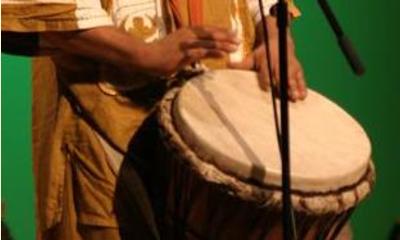|
|
Music and Culture of Peace
un articulo por Maisoon Ateem, Nurana Rajabova, and Philomena Modu
Music knows no borders - it can be understood everywhere without any language. Some say it is the universal language as it cuts through all cultures. Since the beginning of human history music has always been part of the people used to express their feelings and ideas. Music has the soothing feature that makes one calm when angry or in discomfort. It is also used as a means of therapy for people who suffer in mental problems of something. Thus in the promoting of the culture of peace many festivals/ organisations such as up with people use music in the promotion of learning different cultures.

click on photo to enlarge
Every culture is known for its unique aspects of music which could be used as a means of communication and social organisation. In Africa it is a tool that is widely as a form to cleanse the community after clashes or wars where the spirits could be appeased and the dead sent to sleep peacefully. So as Sudan has diverse ways of how they use music to mobilise inform and sensitise the community. For example the sounds of drums could be used to indicate the reconciliation among different peoples in their specific regions.
In the north they use "nugara" a type of drum that is used to call people to peace and negotiation. It is used after the war to bridge the gap and promote harmonious living to create a platform where the people could discuss the issues. Further, other instruments like "tumbour" which is like the kind of wood with plastic strings that is played by the hand to produce sound during weddings which are used as a tool to bring together different groups of peoples in a bond through marriage for the promotion of peaceful coexistence.
Since music has a profound impact on people it is always an effective tool that is necessary to be used in our communities to sustain the culture of peace.
|








|
DISCUSSION
Pregunta(s) relacionada(s) al artículo :
What place does music have in the peace movement?,
* * * * *
Comentario más reciente:
:
As of now, there are 33 CPNN articles on this theme, which shows the great extent to which music is the universal language of peace!

|
|








